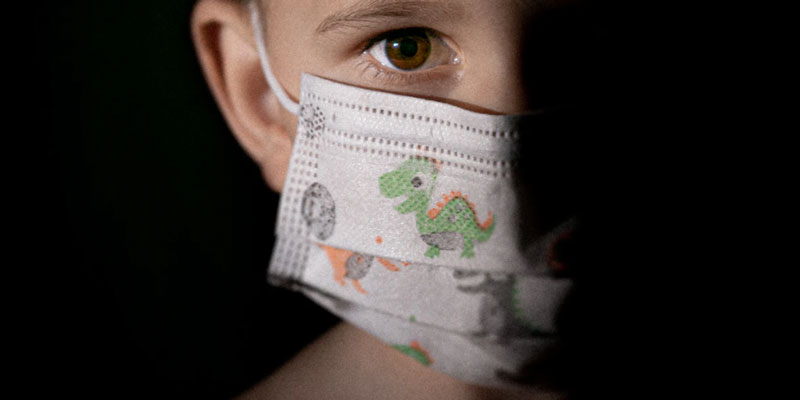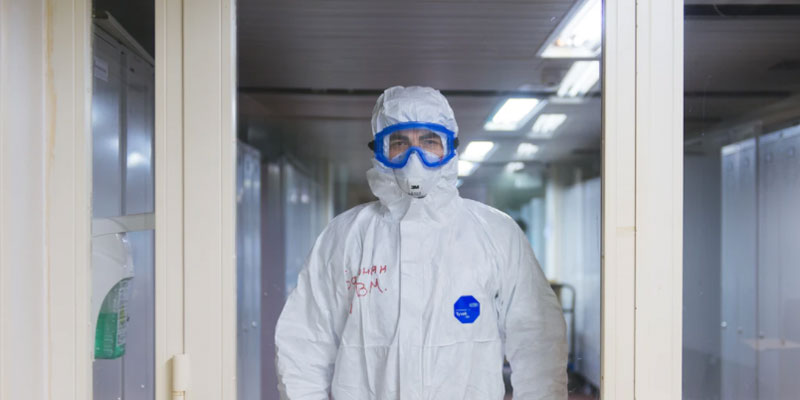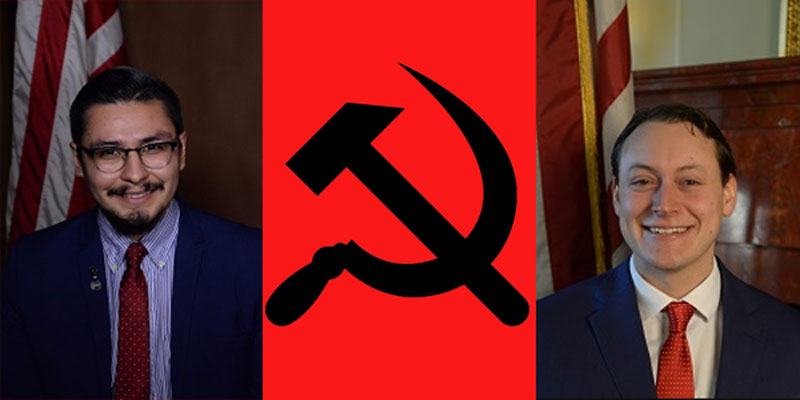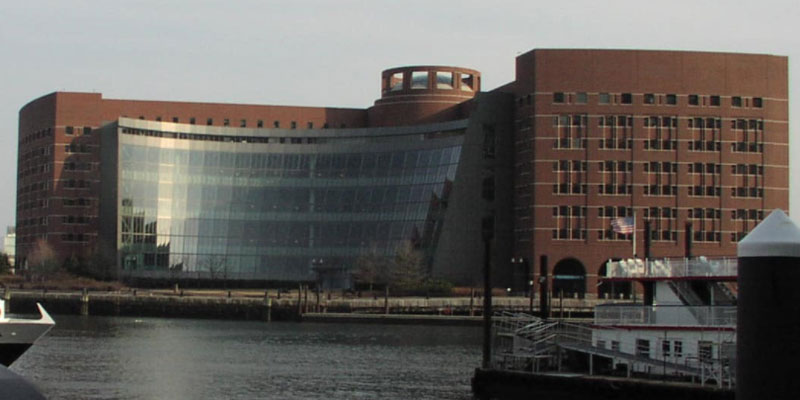The details of the U.S. drone strike on a humanitarian worker in Afghanistan are horrific:
The U.S. acknowledged reports of civilian casualties and said they may have been caused by secondary explosions. The family said when the 37-year-old Zemerai, alone in his car, pulled up to the house, he honked his horn. His 11-year-old son ran out, and Zemerai let the boy get in and drive the car into the driveway. The other kids ran out to watch, and the missile incinerated the car, killing seven children and an adult son and nephew of Zemerai.
Is it too much to expect somebody to have eyes on the target when causing massive explosions in residential areas — somebody to get on the radio and say, “Do not fire. We have children present”?
Watching the excuse-making from Democrat Twitter last night, it seemed to me that the sequence of events has to be made part of this discussion. The Biden administration created a dangerous situation with its botched withdrawal from Afghanistan. When there was an inevitable terrorist attack, administration officials felt they had to save face by striking back.
The order was probably something like, “Find me somebody to attack,” and it’s not inconceivable that the Taliban provided the intel on the target.
Yet, the palace-guard media is still on duty. Check out this disgustingly convoluted first paragraph from an AP article that WPRI gives the toned-down headline, “A deadly mistake: Pentagon says drone strike kills 10 civilians“:
American Troops are out of Afghanistan, and it was made known by Pentagon officials that the last airstrike of the war in the country was a mistake.
That’s how the mainstream press opens a story about an American drone strike on the innocent children of a humanitarian worker? The story doesn’t even give the heart-rending details. There’s only one circumstance in which reporters will do that: When they’re trying to protect an incompetent president from their political party for ideological reasons.
Featured image by AFP on The Borneo Post.
[Open full post]Let’s be blunt about it: the January 6 protesters being treated so poorly are political prisoners. In the United States. Reverse the parties, and we’d be hearing nonstop mainstream media proclamations about how Biden is “literally Hitler.” The government is actually arguing that stay-at-home-parents are more of a terrorist threat!
[Open full post]When Ray Rickman mentioned his support for progressive wealth redistribution during his State of the State conversation with Mike Stenhouse, Sten didn’t want to redirect the conversation into that debate, only mentioning (because he couldn’t not say anything, of course) that the big question is who the angels are to decide when enough is enough. If we want to redirect the conversation into that debate, though, there’s a related but more fundamental objection.
As a thoroughgoing Catholic, I agree with Rickman’s premise that “at some point, you have enough,” as well as the imperative that we have a responsibility to help others. As a free-marketer, however, the problem with the the progressive (or socialist) solution is that the moral imperative is imposed on the person. Worse, it’s imposed in a way that creates a moral hazard for the redistributionists.
To win the day, Rickman need only convince enough other people — who don’t have as much as the rich people and stand to gain by taking what they have — that the wealthier person has enough. Personal experience with having had too little should convince us that “enough” is a sliding scale. Usually, “enough” means “a little more than I have.”
If your task is to convince folks to humble somebody else, your political path is easy. The better, longer-lasting, and more all-around-healthy solution is to convince that person, the wealthy one, that he or she has enough. And that is done culturally and religiously.
The topic brings to mind a Catholic podcast I heard recently in which the participants (conservatively minded, as they were) acknowledged that Steve Jobs did great things through his profit-centered work, but insisted that there was something distinctively right about Mother Theresa’s approach to doing good. Materialists would insist she was taking a profit in some other coin, so to speak, and if we put things in economic terms, I agree with them. Price is simply a statement of value, so in principle, one could go so far as to put a monetary value on the feeling of doing something spiritually rewarding.
But economic terms are not the core of existence. Conscience is. We must form consciences. If Steve Jobs sincerely thought he was doing the most good for the world that he could by investing in his company (rather than the most good that he could do for his bank account), then that’s what he should have done, versus, say, dabbling in charity and social programs. Maybe he wouldn’t have been any good at that. Maybe he would have done actual harm. (Think Bill Gates.) Similarly, if he felt that he needed his wealth, then like the expensive beauty one often finds in churches, maybe he did.
If the person doing intense, world-improving work honestly concludes that he or she needs that luxury vacation home in order to maintain balance and sanity, I’m not really in a position to tell him or her it’s too much. I’d argue that he or she would be even more fulfilled learning to take pleasure from less, but that’s ultimately speculation on my part, to be proven by how I live.
It’s a topic for another post, but the flip side is the good advice we might give to people who have very little: that they should see that they already have enough to be happy and fulfilled. As a Christian, I’d encourage people to consider that at any point they have enough.
For now, let’s conclude by noting that we should be hesitant to tell people that they have enough but eager to convince them that they do.
Featured image by Ishan at See From the Sky on Unsplash.
[Open full post]It’s encouraging to see that some families in Rhode Island have had enough and are willing to take to court to defend their civil rights, as Kim Kalunian reports on WPRI:
Sixteen parents and grandparents have filed a lawsuit against Gov. Dan McKee over his statewide school mask mandate.
The complaint, filed in Providence Superior Court on Thursday, lists the names and stories of parents and grandparents who live in Glocester, Smithfield, North Smithfield and Warwick. Some parents said they’ve chosen to home-school their kids rather than send them to school in masks, which they believe negatively impact their children’s physical and mental well-being.
Recent years, however, have given me reason to fear that the legal system (including administrative complaints, the attorney general, and the judiciary) are not much of a protection in Rhode Island. Too often, they simply apply a legalesed gloss to the elite opinions that created the conflict in the executive or legislative branches in the first place. Once the court has done that, it has essentially laid to rest our rights by taking out the ambiguity. Ambiguity at least gives some room for political leverage. Once a court sides with the tyrant, open season has begun.
Separately, two notes of caution arise from the article. First, consider this part:
“I will not send my child to an establishment being run like a prison,” Aimee Sayers wrote, claiming there have been no pediatric COVID deaths in Rhode Island.
The R.I. Department of Health has confirmed to 12 News there have been what they classify as three pediatric COVID-related deaths since the pandemic started locally in 2020. In each of those cases, COVID-19 was not the primary cause of death, health officials said.
The claim of “no pediatric COVID deaths” comes from Andrew Bostom, and is overstated. That’s a shame, because it gives the media an opportunity to muddy the waters with a “correction.” Kalunian went even farther on Twitter, claiming “Another [parent] made the erroneous claim that there have been no pediatric COVID-related deaths in RI (there have been a small number, per @RIHEALTH).” All of this is unnecessary from the advocates’ point of view. If their claim had been that “almost no” children have died or “no confirmed deaths from COVID-19,” or something similar, any attempt at correction would instead be corroboration.
Second, take a look at the image WPRI has associated with this story for news feeds and social media posts.
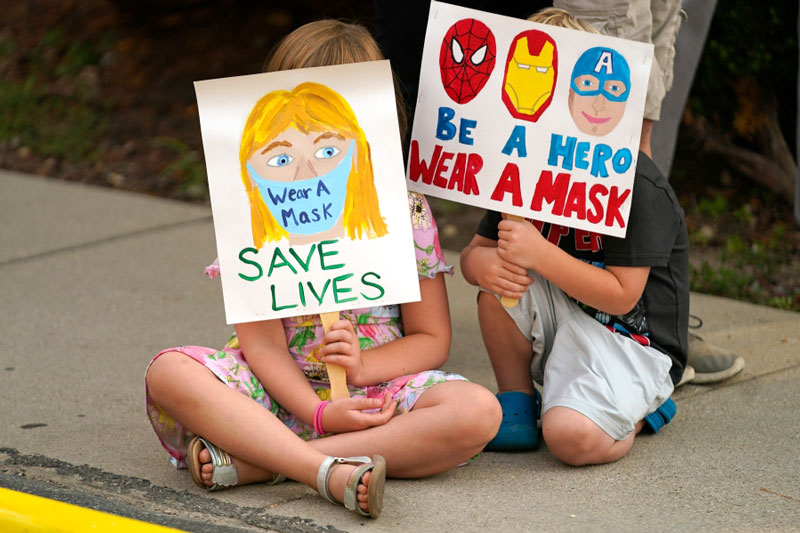
This image directly (I’d say maliciously) undercuts the parents in the story. If you share the story because you support the parents’ lawsuit, the first thing people will see is children engaged in pro-mask advocacy. It seems unlikely this was an accidental choice.
This is like putting a “back the blue” flag on a story about Black parents’ suing a police department for injury to their son.
Featured image by Jan Kopriva on Unsplash.
[Open full post]Something about Andrew Bostom’s analysis of COVID-19 statistics keeps drawing me in, and my conclusion continues to be the same. Although he’s making reasonable points, and although his basic suggestions about policy remain correct, he repeatedly presents numbers as something they’re not in a way that overstates his case.
Here’s the latest tweet that drew me in:

What he’s saying is that the odds of catching COVID-19 again if you’ve already had it are 0.1443 (roughly one-seventh) the odds of catching COVID-19 if you’ve been fully vaccinated. You can flip that to say that somebody who’s vaccinated is seven times more likely to catch the virus than somebody who’s already had it.
Here’s the problem: There is overlap between those groups. He assumes 500,000 people have had COVID (many of them having never been tested) and 700,000 have been vaccinated, but many people have both had it and been vaccinated. If there are very few people who have been infected but who have not be vaccinated, then that alone could explain why very few such people tested positive over the summer.
Bostom makes no attempt whatsoever to estimate that number. Consequently, his odds calculation isn’t all that helpful, and even if we wanted to know these overlapping odds, once he assumes many more people have had the virus than show up as “cases,” he has to adjust his numerators, too, to go along with his changed assumption, and he doesn’t. A bunch of the people he’s reporting as first-time cases would actually be repeated cases.
The interesting question is: What are the odds of catching COVID-19 multiple times if you haven’t been vaccinated versus the odds of catching it for a first time if you have. That’s the comparison of natural immunity with vaccine immunity. This is where my inability to resist analysis comes in.
Let’s start with the cases for July and August that Bostom provides. Because we need some basis to estimate how many Rhode Islanders have had the virus without showing up in the numbers as “cases,” let’s go with a model from Columbia University that NPR reported in February as showing that five times more people had been infected than had been counted. This would mean 772,765 Rhode Islanders had already had the disease by the end of July. Luckily, we can stick with the reported number of vaccinations.
For our numerator of people who’ve been infected again, we therefore multiply the “repeat, non-vaccinated infections” by five, because many people counted as first-time cases should really be repeats, and we get 1,160. For the denominator, we multiply the total known cases by five and subtract the number of people we think were vaccinated even though they already had the disease. We’ll assume that prior infection had no effect on whether or not a person was vaccinated (which isn’t as unlikely as it sounds if we’re assuming most people who’ve had it didn’t know, or at least weren’t tested). So, we take the percentage of the population we estimate to have been infected and apply it to the number of vaccinations. That gives us 301,257 people who have had the virus, have not been vaccinated, and did not catch the virus again in July or August.
Now for those who’ve been vaccinated but never had the virus. In this case, we start with the number of people reported as vaccinated and infected for the first time and then subtract out all the extra people we think are actually repeat cases. This gives us a numerator of 2,768. For a denominator, we take the ratio of our estimated people who’ve never been infected versus the total population and apply it to the number of vaccinations, getting 170,310 Rhode Islanders who have been vaccinated and have never been infected.
If we plug these numbers into the online calculator that Bostom used, we get 0.2369, which means that your odds catching COVID-19 more than once if you haven’t been vaccinated are about 1/4 your odds if you’ve been vaccinated but never infected. That’s more in keeping with the numbers one sees here and there in public reports than Bostom’s 1/7.
Since we’ve come this far, we might as well answer the next important question: If you’ve already had COVID-19, how much do you improve your odds of avoiding getting it again if you get vaccinated? In this case, our 5x-cases estimate gives us a numerator of 565 people who’ve been infected again even though they were vaccinated and a denominator of 469,783 Rhode Islanders who have both natural and vaccine immunity and did not catch the virus in July or August. The calculator spits out 0.3123, which means if you’ve had COVID-19, your odds of catching it again if you’ve been vaccinated are about 1/3 your odds if you haven’t been vaccinated.
That’s a big improvement, but as I keep saying, your odds are good in any event. As far as the rest of us should be concerned, government forcing you to be vaccinated if you’ve already had COVID-19 is nuts.
Another interesting observation, looking at the numbers in this way, is how few people have neither type of immunity: just a little over 100,000. If that’s even close to correct, it’s simply foolish to exert government power to force vaccination and mask wearing. It’s also a mystery why public health officials are not, instead, pressing for immunity tests. It’s as if they’re choosing to reduce our knowledge of the virus in Rhode Island for some reason other than public health.
Featured image by Vladimir Fedotov on Unsplash.
[Open full post]Michael Morse tells a cute story about how he used his one phone call from prison to explain to his future wife why he had missed their date. Before going on read how he tells it and come back. Here’s the summary with the key details for this post.
Morse was racially profiled as some other white guy and asked for ID. That turned out to have consequences, because he had missed a court summons for driving with an expired license.
I can testify from experience that these sorts of things happen to young men who are still trying to figure out how to balance respect for the rules with the challenges they present. So, you take a risk, and sometimes that leads to the next step in enforcement.
Now change his race, and way people would tell the story changes. The way the participants engage in the incident changes, too. Maybe indignation even turns into confrontation and tragedy. Then political drama increases the likelihood of conflict in other cases.
[Open full post]Months to get a car part. No juice boxes at the super market. Computer prices shooting up. Paper towels disappearing from BJ’s. And now simple bloodwork has to be scheduled weeks in advance.
Any chance I’d feel like the only person observing these phenomena if there were a Republican in the White House?
[Open full post]Literally. Here’s the headline of an interview they did with Jacobin, an explicitly socialist magazine: “Socialist Legislators Are Taking on Rhode Island’s Ultraconservative Democrats.”
It shows you how frighteningly radical these people are that they say, apparently with a straight face, that Rhode Island’s leading Democrats are “ultraconservative.” Naturally, this is standard language for Bell, who characterizes Rhode Island policy as “brutal right-wing economic policies passed by Democrats.” Surprisingly, he doesn’t use the word “horrific” in the interview. (That’s a favorite of his.)
Maybe they’re all laughing into their sleeves. Consider this exchange with interviewer Daniel Crowell:
DC: Sam, I don’t remember anything that extreme during your election, but I imagine you still had some dirt thrown at you.
SB: [Refers to ballot harvesting controversy.] So we do have a lot of aggression and the machine will resort to a lot of dirty tactics. There was also a Twitter account set up to put out memes about me.
DC: I liked that.
SB: I didn’t particularly enjoy it at the time. But I did enjoy how they made Red Scare memes about how I wanted to turn Rhode Island into Venezuela — putting my photo next to Mao and Lenin and Marx.
DC: Since you were exposed to those red-baiting tactics, what do you see as the benefit of associating with Providence DSA and identifying as a socialist?
Notice the effortless wafting across the line where associating them of being socialists is “red-baiting,” while proclaiming how wonderful it is to be openly socialist. They never bother to define where they differ from Mao, Lenin, Marx, and Chavez. If the interviewer were to ask, “Well, what sort of socialist are you?,” the answer would be some variation of, “The kind who supports all of the good things about socialism and none of the bad.”
But socialism is bad. It’s a flawed ideology that packages fairytales as “fairness” and wreaks havoc on a society.
Maybe the kids who’ll be beginning to vote in the next few elections have been sufficiently brainwashed by union teachers and the media propaganda that they’ll be fine with open socialism. If so, we’ll see the little sliver of their remaining mask come off. After all, the actual Jacobins instituted the Reign of Terror in France.
In the meantime, now that they’ve self-identified so as not to be misunderstood, we should insist that Bell and Morales are accurately labeled as socialists.
[Open full post]Remember the massive coverage and overheated rhetoric (continuing to this day) when the FBI tangled General Michael Flynn into a “false statement”? Compare that memory with this just-the-facts coverage of a Democrat National Committee lawyer’s predicament in the New York Times.
The headline is in the passive voice: “Durham Is Said to Seek Indictment of Lawyer at Firm With Democratic Ties.” The lede emphasizes that “he denies wrongdoing.” The reporters imply that the matter is only newsworthy because, if it goes forward, the case “is likely to attract significant political attention,” in true “Republicans pounce” fashion. Oh, and by the way, “an indictment is not a certainty.”
The New York Times treated such “political attention” cases quite differently when the people in the spotlight were on the other side, with headlines like: “Trump Team Knew Flynn Was Under Investigation,” “What (if Anything) Does Carter Page Know?,” and “Ongoing Trump Migraine: His Initial Foreign Policy Team.”
The Times led the way in drumming up scandal, making them seem real rather than “political,” and pinning things on President Trump. Now they’re doing the opposite.
[Open full post]In Gaspee Project et al. v. the Rhode Island Board of Elections et al., the United States Court of Appeals for the First Circuit has found that Rhode Island’s requirement for issue advocates to disclose donors over $1,000 is sufficiently narrow and that the goal of an “informed electorate” is sufficiently important to allow an infringement on privacy, associational, and speech rights. That’s not quite how the court and the law’s defenders would put it, but it’s accurate.
The moment the court rejected the notion that campaigning for a candidate is fundamentally different from campaigning for a ballot question, the game was over. When it declared that concerns about the targeting of donors must be concrete and proven, it ignored the huge silencing effect that every example elsewhere in the country can have. Both of those are intellectual and moral travesties.
The “informed electorate” argument related to candidates is defensible because a candidate is a person, and that person may feel obligated to return favors. Thus, disclosing who is paying to elect somebody gives voters a sense of to whom that person might owe a favor. “Issues” don’t return favors. Voters might find it interesting to know who else supports a cause, but the advocacy is entirely about persuasion. Whether the argument for or against a ballot question is sound does not depend on the identity of the people funding advocacy.
Nonetheless, there are two hard lessons for people who begin to engage in the civic legal battle. The first is that legal precedent is so dense and complex that multiple tracks exist from which a judge can choose. If he or she wants to find a reason to rule in one way or another, legal precedent can be found.
The second hard lesson is that judges, smarter-than-average though they may be, often miss points, whether obvious or subtle. I’ve watched them read obviously false statements into the record as part of their rulings, and the only way to correct the record would be a higher appeal. The charitable conclusion is that (surprise) they’re human, and our system asks them to absorb the facts of a relentlessly rolling series of highly divergent cases.
The Gaspee Project tells Anchor Rising that it believes “the United States Constitution provides more safeguards against state intrusion than currently recognized” and looks “forward to a review by the US Supreme Court.” This is good news, because the principle at risk is important, and a Supreme Court ruling makes one of the multiple tracks of precedent the dominant one.
Reading the text of the First Circuit ruling, however, an additional point leaps off the page: the contempt judges David Barron, Bruce Selya, and Pedro Alberto Delgado-Hernandez display toward the plaintiffs. Whatever one’s conclusion about how to balance competing interests, many of us (non-rich, well-meaning Americans) believe that the real purpose and function of disclosure laws is to expose people who support a cause to harassment and cancelling, thus creating disincentive to participate in our system of government when not aligned with the progressive mob.
That is a sincere concern, and yet the court’s language is that of cutesy mockery. Two examples:
In a Rumpelstiltskin-like effort to turn dross into gold, the appellants beseech us to consider the potential effects that the Act — and particularly, its disclaimer requirement — will have on their own organizations and memberships. …
Equating the production order invalidated in NAACP with the disclosure requirements of the Act is like equating aardvarks with alligators.
Notably, this language appears precisely at a pivotal moment, illustrating which track of precedent this court has chosen. The judges insist that the threat to donors must be decisively proven, yet the value to the public of knowing their names is simply assumed. Thus, the mockery reveals the judges’ narratives. On one side are the supposed rich who should man-up and put their names where their money is, while on the other are the innocent, childlike members of the public who will simply take the names of donors under advisement.
This narrative is foolish and flawed. One billionaire who is willing to put his name on a fashionable left-wing cause can fully fund an advocacy organization, but middle-class supporters of a group formed to defend the traditional position would be forced to accept the same degree of scrutiny, or else the organization would have to spend resources collecting many more smaller donations. Thus, the Marxist framing once again benefits the most elite.
The dripping contempt of this ruling is entirely in keeping with that dividing line. A progressive elite considers others’ concerns about their loss of rights to be comeuppance, as something they deserve for being so retrograde.
In this, the judges are contributing to a very dangerous situation. We are not represented. When we manage to elect representatives who share our values, they are coopted and thwarted by the bureaucracy. When we find more-stalwart allies who’ll stand up for our values, the elite treat them as invalid and attack them relentlessly. When we go to court, our concerns are dismissed with contempt.
What’s the next step when this proves to be the case? Certainly not submission of our values… not for long, anyway.
Featured image of the First Circuit building on courtrecordsfinder.
[Open full post]




